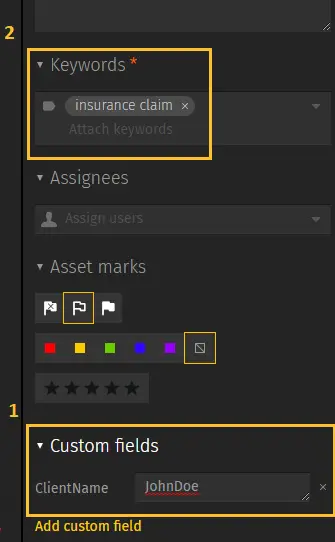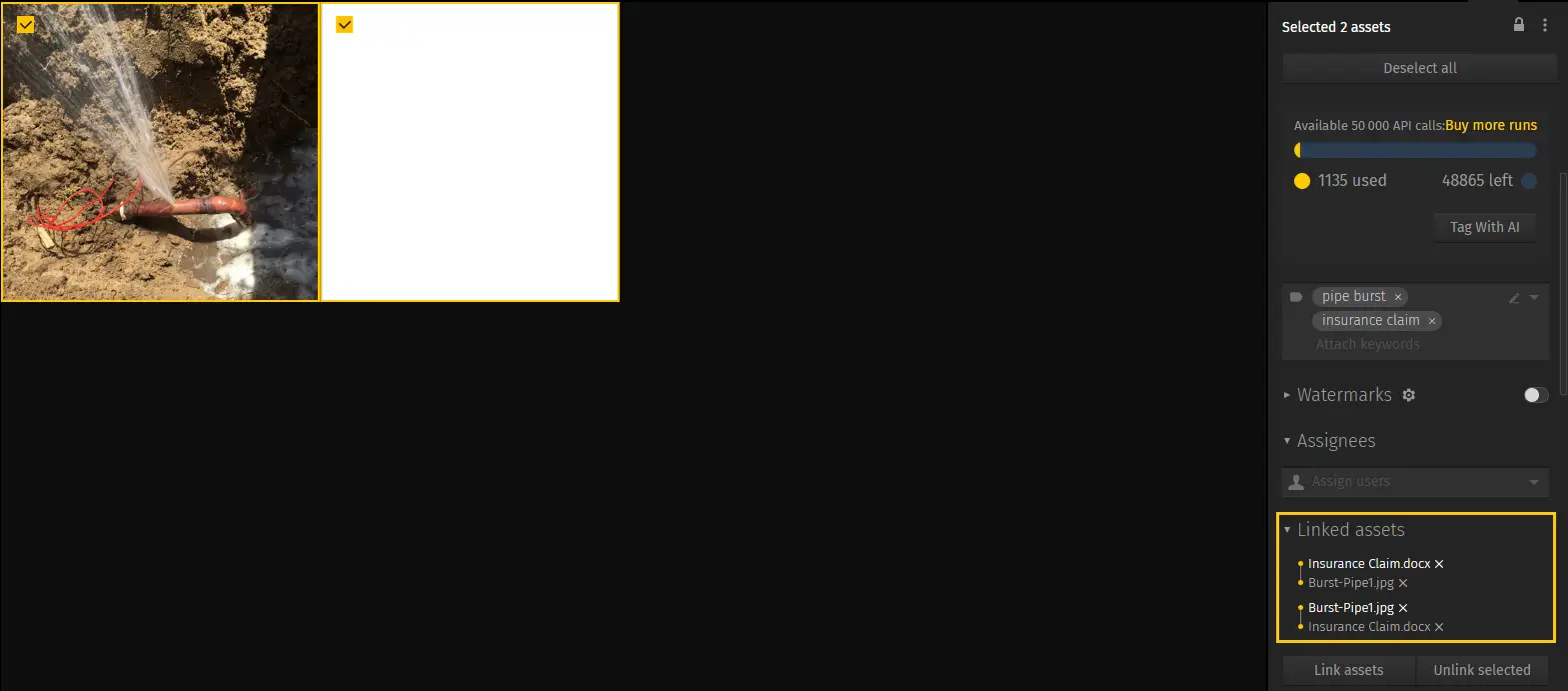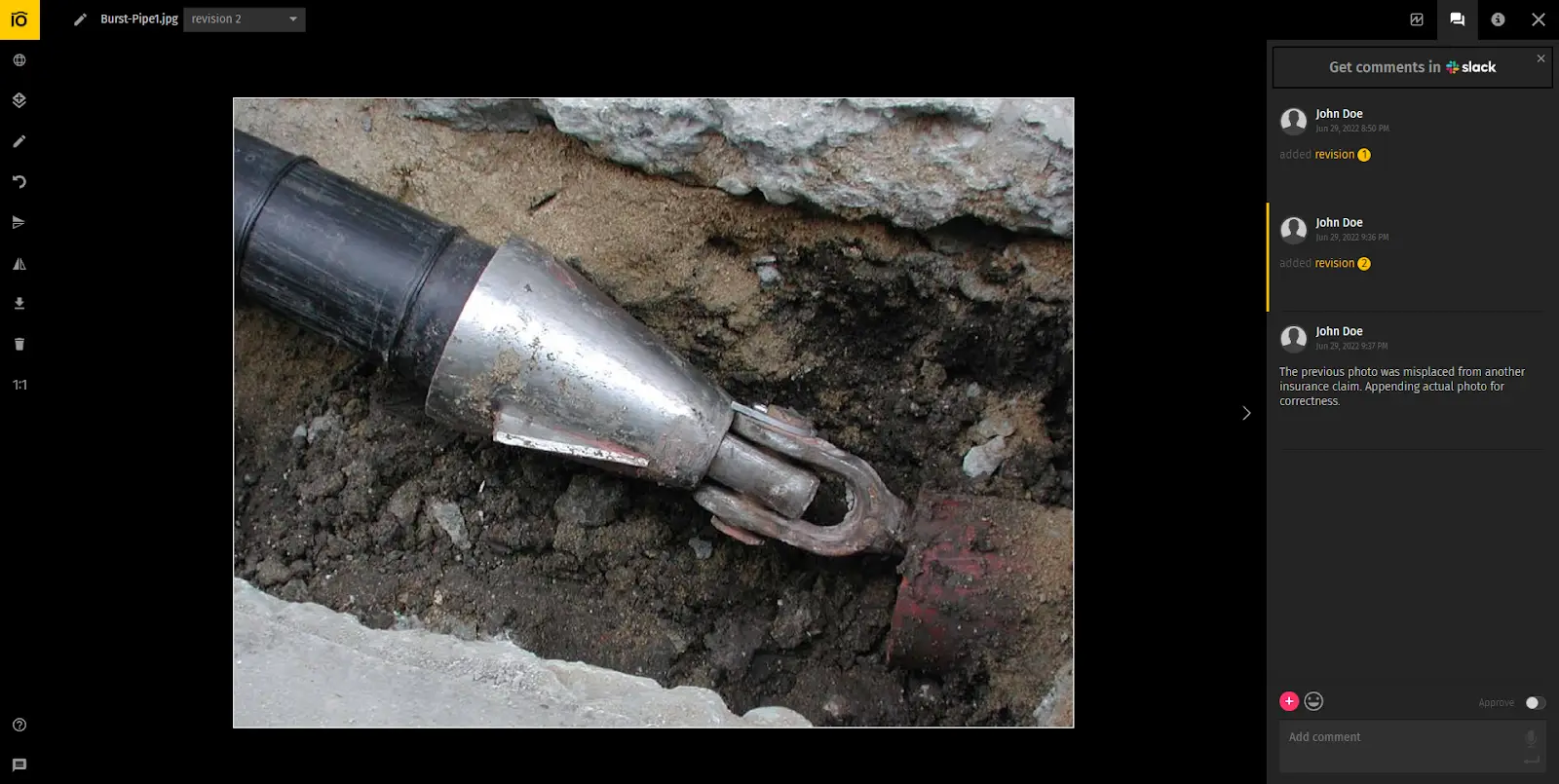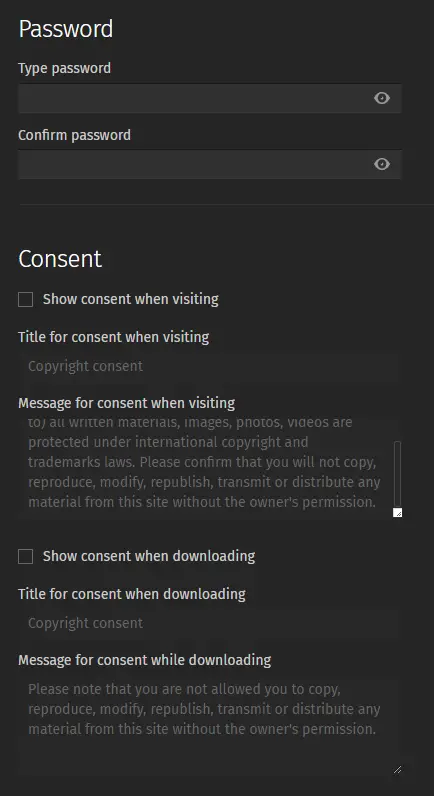In this article, you’ll learn:
Both public adjusters and insurance companies agree on one thing - without an insurance claims management system, your work can quickly become a tangled, complicated mess of documents and evidence.
Visual evidence, transcripts of dialogues, copies of statements, property information… you know the drill. And it’s not like it’s one and done thing: it is not rare for, say, construction inspection to unravel some extra evidence that you have to append to the original asset.
Multiply all of that by whatever the number of clients you have at any given time and one question floats to the top: how do you handle all that data without misplacing, losing, or misattributing it? With metadata and proper software to handle it, of course!
Multiply all of that by whatever the number of clients you have at any given time and one question floats to the top: how do you handle all that data without misplacing, losing, or misattributing it? With metadata and proper software to handle it, of course!
In today’s article, I will tell you how digital asset management (DAM) systems can become your next stop for all your insurance claim management needs.
What is Digital Asset Management?
To start off, a quick brief on what is DAM. It is a software solution created to make the management of document and media libraries easier by providing users with tools that streamline search, sharing, collaboration, and permission management.
In other words, instead of building a complicated mess of a Google Drive folder where each claim has multiple subfolders, you can use metadata search to find a single asset using particular criteria (for example, you can add a client’s name as a metadata field) and then find all other assets that have been linked with it, regardless of where they are.
Let’s take a look at how it works in practice using our Pics.io DAM as an example.
Uploading Asset and Adding Insurance Metadata
So here I have a dummy document that outlines the nature of the claim.
Whenever you upload a new asset to Pics.io, you can add metadata, using a side panel. Two of the most useful things to add would be Custom Fields (1) and Keywords (2)
Keywords are descriptive tags that let you note the object or the subject of an asset. You can see that I’ve added only one - insurance claim - because I am uploading a text asset. If that was a photo, for example, I can also add keywords that tell me what is in the photo (e.g. condo, pipe leak, electrical grid, etc.)
Custom Fields serve the same purpose of discoverability but are better used for information that is more specific than a keyword. In this case, I’ve created a ClientName field where I can add the client’s name to whom this particular claim belongs.
But you can also create fields with other data types such as numbers, date, radio buttons, and more. So, you can have fields such as DateOfCreation or IsClosed to help you better navigate your library.

…without underlying metadata structure, you’re really looking at little more than countless files sitting on a hard drive somewhere that you don’t really know how to extract value from. - Garret Hollander
Metadata lets us find assets without knowing their precise names or location. Let’s say you need to bring up an old case for review or training. Instead of precisely remembering that once there was John Doe from Minneapolis that had a pipe burst under his house, you can just type in “pipe burst” in your search and it will bring up all the information about that or similar cases in an instant.
Even such human errors as misplacing an image or forgetting where you’ve put it are easily amended by the use of metadata and utilization of linked assets.
Linking Insurance Evidence with Claims
Another great way to make sure that assets are never scattered around is by linking them together. Simply click on the thumbnails of two assets that you need to link and click Link assets.

Once done, you can freely navigate through linked assets via each one’s individual info panel:

It’s a really handy thing because it significantly cuts down on downtime attributed to asset search and discovery. Per Datto, small companies can be paying up to $133 per minute of downtime, regardless of the reason that it’s happening. Keeping everything together with linked assets lets you get down to the matter at hand almost immediately.
Updating Insurance Claim Assets
The situation as presented in the initial claim rarely is the same that you find yourself with at the end of all procedures. Perhaps it was filed incorrectly or you’ve received new evidence that elaborates upon or contradicts previously submitted evidence.
But you might still want to keep old information for the sake of record and all these unexpected “just in case” occasions. Unsurprisingly, that’s where DAM can make your life easier as well thanks to version control.

Clicking Add revision lets you upload a new version of an asset on top of an existing one. That way, both versions of an asset can be accessed from under one thumbnail, and you can also include descriptive information to explain why this or that version has been uploaded.

Managing Team’s Permissions to Eliminate Data Leaks and Errors
Per Tessian, 9 in 10 data breaches happen due to human error. Unless we stop being humans in foreseeable future, that’s something you have to contend with.
Fortunately, proper permission management lets you limit the number of errors that you and your employees can make by ensuring that each teammate gets to see only the things that they should.
A great example of where this would be applicable is the division of responsibilities. Let’s say you have two teams, A & B, working on different sets of claims. This means that a person from team A doesn’t need to see any assets that are being handled by team B.
Going over to Team Roles, you can create separate roles for each team and then specify which collections they can see and what exactly can they do with them (view only, upload/deletion, editing, etc.)

Because the number of roles you create is infinite, you can make these permissions as granular or as generalized as you need.
Sharing With Information Sharing Consent Forms
Finally, there is the question of sharing information with third parties. Let’s say you’ve reviewed all the evidence and prepared the case for submission. Perhaps you would prefer to share it with your client or if you’re a public adjuster, send them over to the insurance company.
Pics.io DAM lets you share multiple files in minutes while providing you with all the security and legal measures that you would need when sharing such sensitive information.
After you’ve created a Website (that’s what we call interactive online portals that you can create in a minute), you can opt to secure it with a password so even if somebody else gets ahold of the link, they cannot see what’s inside.
There is also an option to create a consent form to notify viewers of any repercussions should they not comply and frivolously share, distribute, or modify files without your approval:

And, just in case you accidentally decide to share assets that you marked as restricted, Pics.io will let you know before the publication so that you can rectify the said mistake.
You can also allow those with a link to interact with assets the very same way that you would inside Pics.io: comment, download, and compare revisions. Thanks to the integrations with multiple workflow tools, you will receive an email and Pics.io notification as soon as somebody comments on any shared asset, thus improving and speeding up communication with third parties.
Receive Documents and Evidence Directly in Your Library
Exchanging info swings both ways, and you might require not only sending but receiving assets. For that, you can use inboxes that generate a link to the uploaded webpage. Anyone with a link can use it to upload any assets that you might need and you can instantly move and tag them just how you see fit.
DAM Helps You Streamline Workflow Without Sacrifices
As you figured out by now, the purpose of DAM is to make your existing workflow easier and more intuitive. Instead of trying to do unspeakable things with Google Drive to make it a decent library manager, you can just use DAM and enjoy all the benefits and quality of life improvements.
Speaking of Google Drive…
If you have an existing Drive or Amazon S3 storage that you maintain to digitally store all your work assets, you don’t need to ditch either.
Pics.io can work like Google Drive DAM, meaning that it acts as an envelope over your existing storage. All your assets and folders stay where you’ve left them, and interacting with them through the DAM interface automatically updates them everywhere.
It goes without saying that this integration comes at no extra cost and Pics.io won’t “see” your files if you care about privacy and security.
This capability makes trying out Pics.io an easy and exciting proposition as you don’t commit too much effort to kickstart a trial period. So, why not give it a try and see if it is something that will work for you?
See you there ;)
Conclusion
- Insurance claims can contain multiple documents and evidence that can be updated, changed, or rectified as the case develops.
- Typical solutions for storing such media (e.g. Google Drive) do not offer proper metadata management that can help you find and link those assets together.
- That leads to data loss, mismanagement, potential leaks of sensitive information, and reduced work efficiency.
- DAM can work as Insurance Claims Management system due to its metadata management capabilities that allow you to tag and link assets together for better and quicker retrieval.
- In addition to metadata management features, DAM can further enhance collaboration by providing intuitive ways to manage asset revision and sharing multiple files simultaneously.
- Pics.io DAM solution is a unique proposition on the market as it can work on top of your existing Google Drive storage, saving you money and time you would have to spend transferring files to new storage.
FAQ
What is the purpose of the Insurance Claims Management System?
Insurance claim management software ensures that claims filed by each client (and the associated evidence) are properly gathered in one place while efficient metadata and viewership permission management ensure that data from one file doesn't get mixed up with the other. For more advanced and tailored solutions in managing insurance claims, partnering with an insurance software development company can provide specialized software tailored to your specific needs and workflow.




